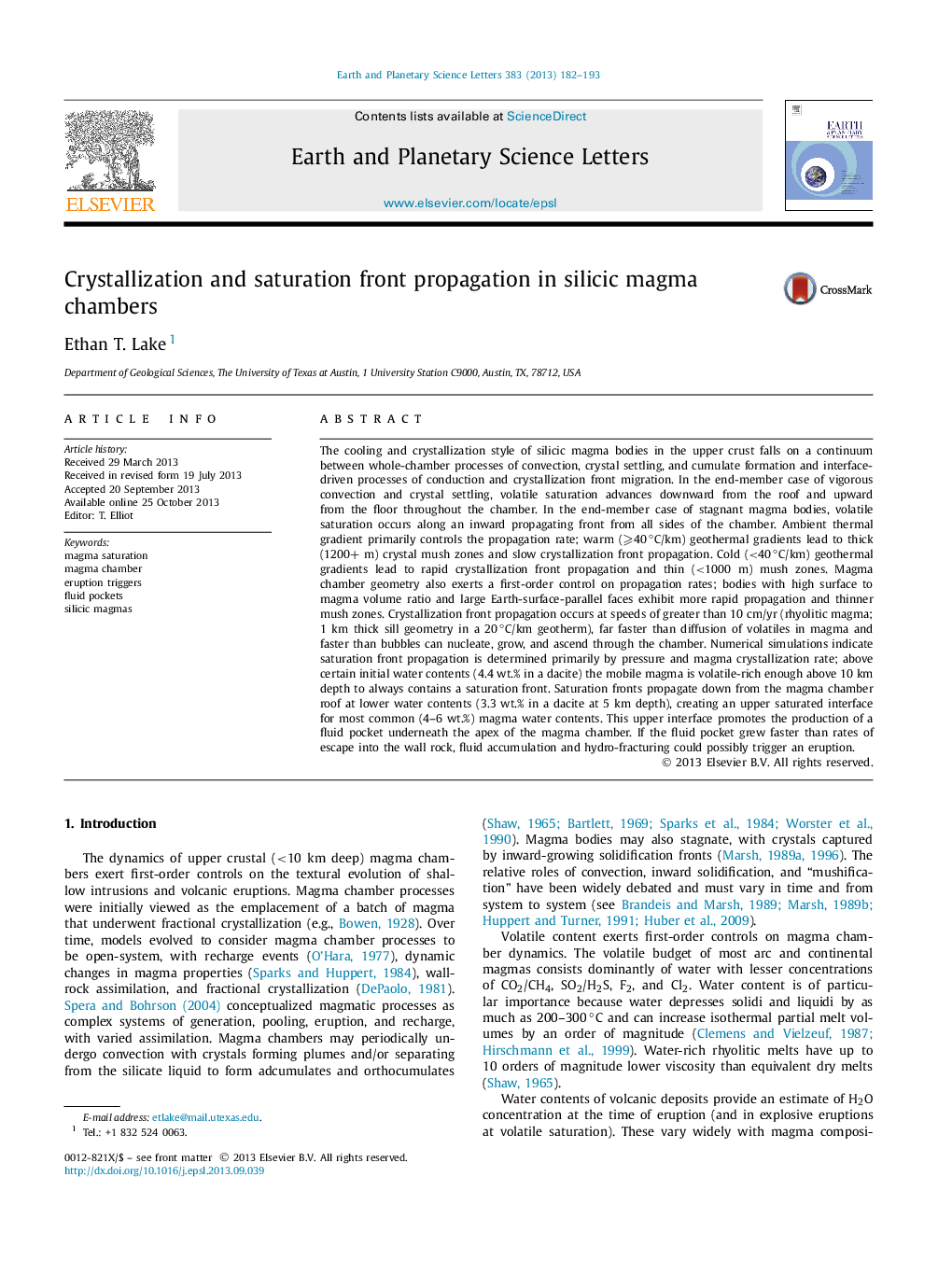| کد مقاله | کد نشریه | سال انتشار | مقاله انگلیسی | نسخه تمام متن |
|---|---|---|---|---|
| 6429866 | 1634773 | 2013 | 12 صفحه PDF | دانلود رایگان |
- New model characterizing interplay of cooling, crystallization, magma saturation.
- Explores conditions under which magmatic fluids can escape entrapment in mush.
- Dacitic magma likely to permit fluid escape, rhyolites more likely to trap fluid.
- Fluid pocket build-up in dacites can trigger eruption; e.g. Pinatubo, 1991.
The cooling and crystallization style of silicic magma bodies in the upper crust falls on a continuum between whole-chamber processes of convection, crystal settling, and cumulate formation and interface-driven processes of conduction and crystallization front migration. In the end-member case of vigorous convection and crystal settling, volatile saturation advances downward from the roof and upward from the floor throughout the chamber. In the end-member case of stagnant magma bodies, volatile saturation occurs along an inward propagating front from all sides of the chamber. Ambient thermal gradient primarily controls the propagation rate; warm (⩾40â°C/km) geothermal gradients lead to thick (1200+ m) crystal mush zones and slow crystallization front propagation. Cold (<40â°C/km) geothermal gradients lead to rapid crystallization front propagation and thin (<1000 m) mush zones. Magma chamber geometry also exerts a first-order control on propagation rates; bodies with high surface to magma volume ratio and large Earth-surface-parallel faces exhibit more rapid propagation and thinner mush zones. Crystallization front propagation occurs at speeds of greater than 10 cm/yr (rhyolitic magma; 1 km thick sill geometry in a 20â°C/km geotherm), far faster than diffusion of volatiles in magma and faster than bubbles can nucleate, grow, and ascend through the chamber. Numerical simulations indicate saturation front propagation is determined primarily by pressure and magma crystallization rate; above certain initial water contents (4.4 wt.% in a dacite) the mobile magma is volatile-rich enough above 10 km depth to always contains a saturation front. Saturation fronts propagate down from the magma chamber roof at lower water contents (3.3 wt.% in a dacite at 5 km depth), creating an upper saturated interface for most common (4-6 wt.%) magma water contents. This upper interface promotes the production of a fluid pocket underneath the apex of the magma chamber. If the fluid pocket grew faster than rates of escape into the wall rock, fluid accumulation and hydro-fracturing could possibly trigger an eruption.
Journal: Earth and Planetary Science Letters - Volume 383, 1 December 2013, Pages 182-193
